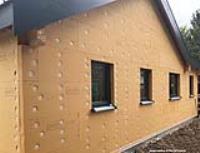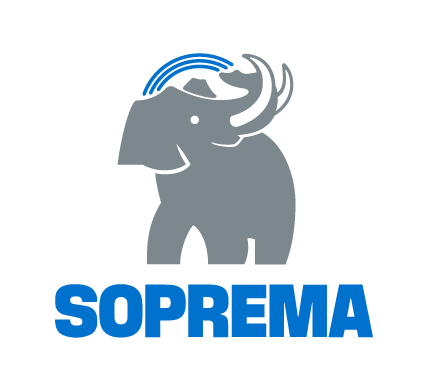 Add My Company
Add My Company
Sign In

Nestling in the rolling hills of the Cotswolds is a self-build project that proves that bespoke homes don’t need to be extravagant to be exceptional. Constructed to Passivhaus standards to deliver both sustainability and low running costs, ‘The Paddock’ makes use of woodfibre insulation from Soprema’s Pavatex range The result is a modest two-bedroom cottage that has achieved outstanding thermal performance with the use of a natural, renewable material that’s in tune with the ethos of the project and its location.
A Natural Approach
Located near Shipson-on-Stour, ‘The Paddock’ is a two-bedroom, two-bathroom timber-frame property with a double height open plan living area. While not certified as Passivhaus, as this involves additional costs for certification, the 1.5 storey bungalow has exceeded the airtightness and thermal performance requirements of the standard, while complementing its natural surroundings.
Designed and constructed by Passivhaus and sustainable building specialist, Mac Eye Projects, The Paddock has been built for a private client on land owned by her family. The brief was to use natural materials wherever possible and minimise the environmental impact of the build, while creating a comfortable home requiring minimal heating or cooling.
Preventing Thermal Bridging
Mac Eye Projects has worked with Soprema’s Pavatex products on many previous projects, including Larch Corner, which won the prestigious Passivhaus Trust Award. Thanks to this experience of the system, Andy MacKay knew that a continuous layer of 100mm Pavatex Isolair from Soprema’s woodfibre insulation range could be used to provide a thermal bridge-free external envelope across the walls and roof. The specification combined the Pavatex Isolair for the walls and roof with a roof build-up that includes sheep’s wool insulation and pro-passive OSB board.
A vapour permeable and water resistant dry processed woodfibre board for use in wall and roof build-ups, Soprema’s Pavatex Isolair system has tongue and groove edges to enable sections of insulation to be fitted neatly and precisely together, creating a smooth and continuous surface.
The timer frame cottage was constructed with a 160mm stud wall and an engineered timber roof, where glulam beams provide additional structural stability. A 12.5mm layer of Pro-passive OSB board has been fixed to the interior face of the stud walls and this has been plastered and painted to create the interior walls, providing both airtightness and additional structural integrity. The sheep’s wool insulation has been packed within the stud wall to provide an additional layer of insulation and Soprema’s Pavatex Isolair has then been fixed to the exterior of the stud wall to completely encapsulate the building envelope with high performance woodfibre insulation.
Andy MacKay explains: “The tongue and groove connections provided by Pavatex Isolair enabled us to achieve an uninterrupted thermal wrap for the external wall surface, onto which the render could be directly applied.”
Integrity of the Interface
“The most vulnerable areas for air leakage and thermal bridging are always the junctions between building elements,” Andy MacKay continues. “We had to be particularly mindful to maintain thermal performance when designing the interface between the window apertures and the Pavatex Isolair.”
Hardwood, triple-glazed window units were specified for the project and the Mac Eye Projects team was able to create a 40mm lap of woodfibre insulation over the interface with the glazed units around the perimeter of each window aperture. Each triple-glazed unit was then installed from inside the building. In this way, the critical junctions at each window were designed to be thermal bridge-free.
Andy MacKay continues: “The Pavatex Isolair has been used to completely encapsulate the cottage but comfort is just as important as thermal performance and running costs – and that includes connecting the indoors with the surrounding countryside with careful window placement.
“Soprema’s technical team worked with us to support the design of the interface between the Pavatex Isolair and other building elements to ensure we leverage the full thermal performance benefits of the system.”
Ambient Solution
The thermal performance benefits of wrapping the property in a layer of 100mm Pavatex Isolair not only include keeping The Paddock warm in winter and reducing the amount of heat energy needed but also managing heat gain in the summer.
“Because woodfibre insulation is a natural, breathable material it helps the property to maintain a comfortable, ambient temperature all year round,” Andy MacKay continues, “while also delivering the aims of creating a property with environmentally responsible materials.”
Achieving High Standards
While The Paddock has not been certified as Passivhaus, it has exceeded the strict standard’s exacting requirements for air tightness. It is ATTMA-certified with exceptionally low air permeability of 0.18 m3h/m2 @50Pa, thanks to the combination of materials used in the wall and roof build-up and the continuous layer of Pavatex Isolair forming the building envelope.
For more information on Reinventing the Country Cottage as a Thermally Efficient, Passivhaus Standard Home talk to SOPREMA UK
Enquire Now
List your company on FindTheNeedle.
